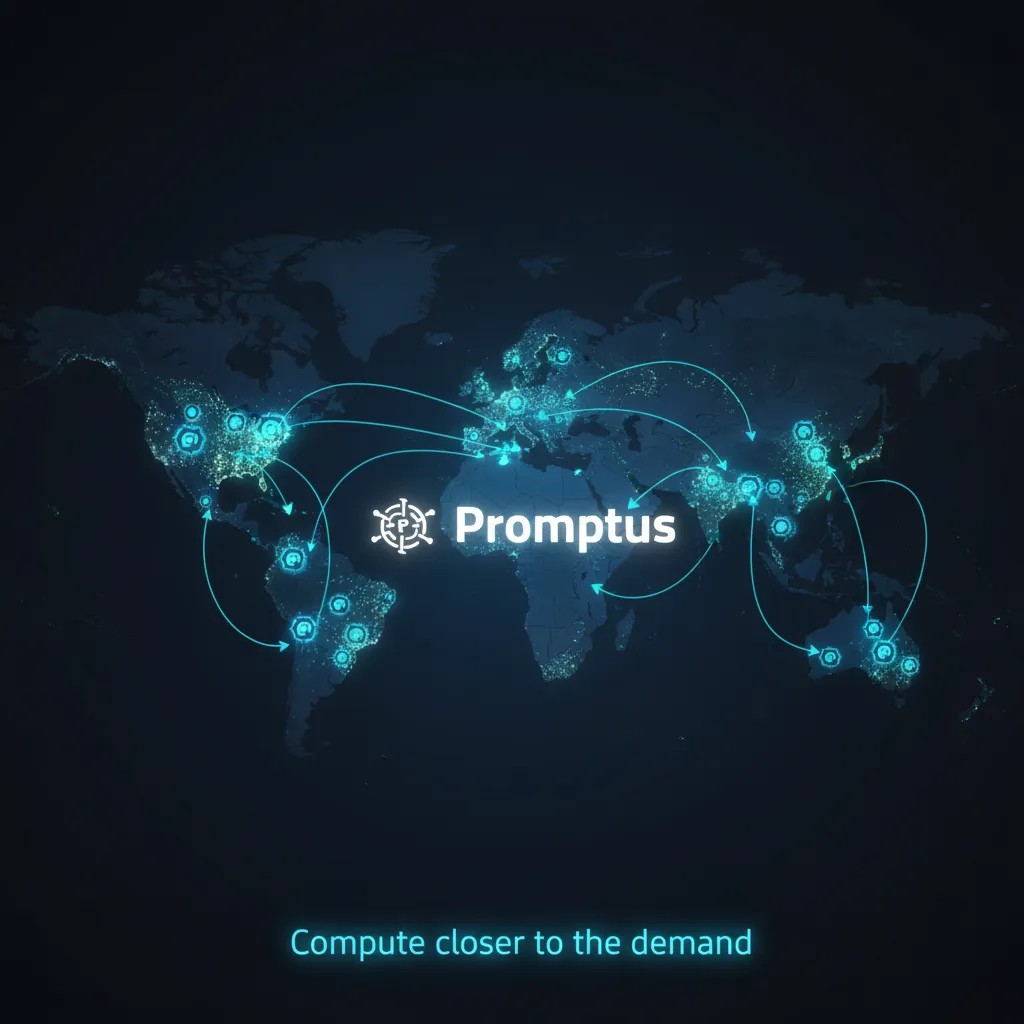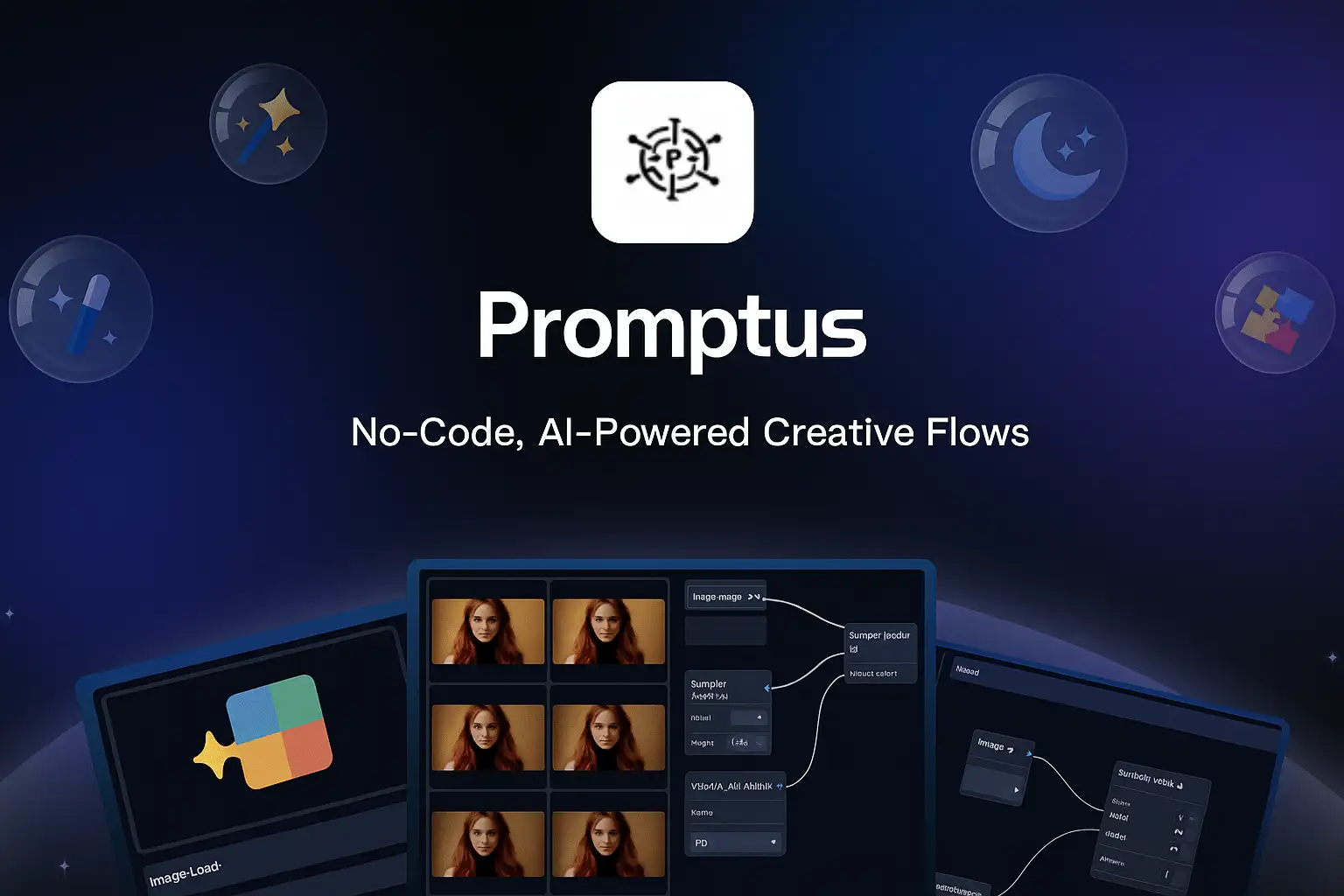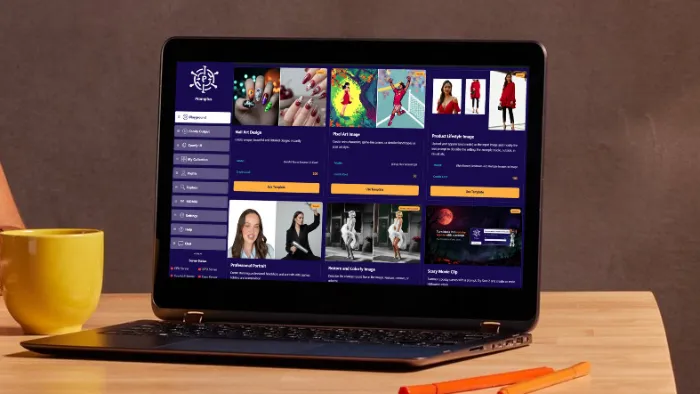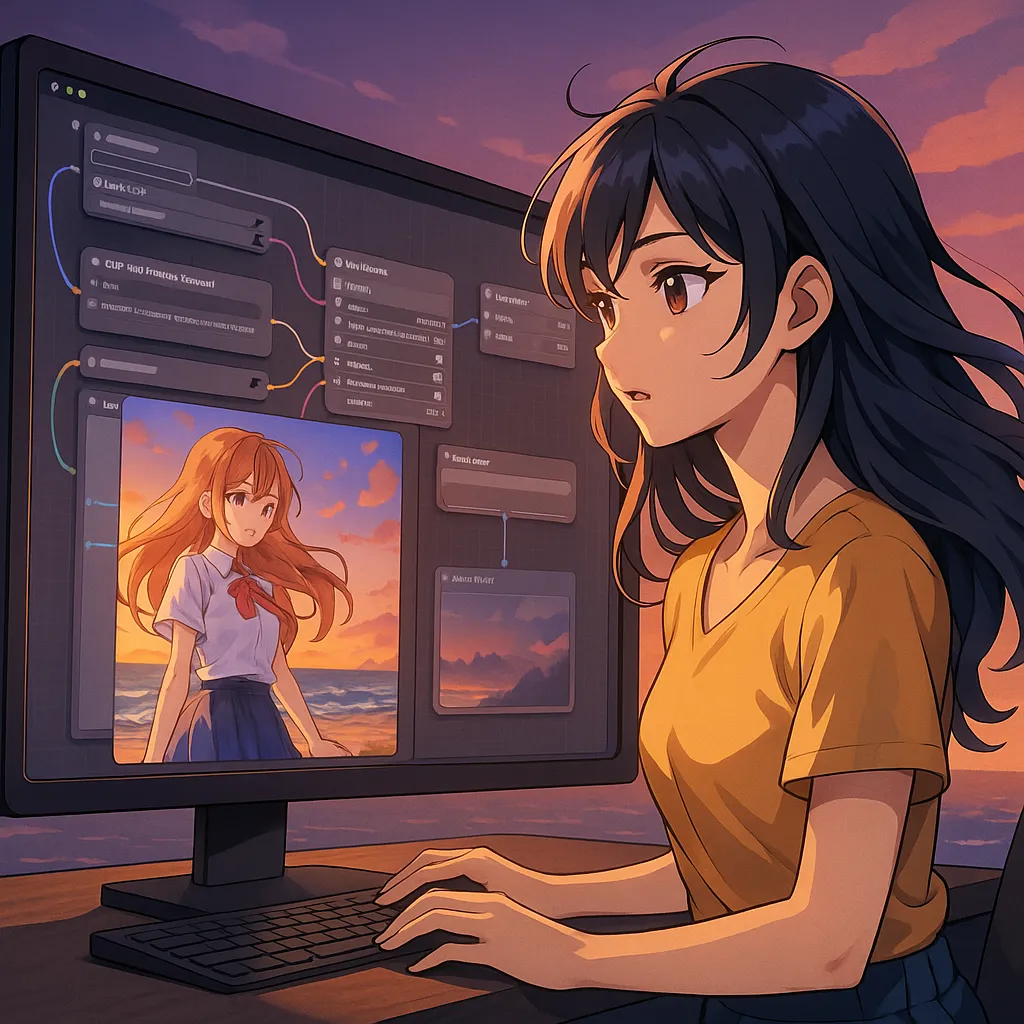
Promptus combines a modern ComfyUI-powered interface with a distributed GPU network and built-in cloud rendering
Stable Diffusion’s ecosystem has grown rapidly, and while Automatic1111 (A1111) was the dominant interface in 2022–2023, many newer tools now offer better design, smoother workflows, and more modern pipelines—especially with SDXL.
This article explores the best alternatives to Stable Diffusion Web UI, outlining their features, strengths, weaknesses, and ideal use cases.

1. Promptus – Modern, Clean UI Powered by ComfyUI
Best for: Users wanting a modern, fast, visually polished interface without giving up ComfyUI power. Platforms: Windows, Browser
Promptus (often “PromptUs”) is one of the newest and most impressive A1111 alternatives. It combines a modern, responsive interface with the full power of ComfyUI under the hood.
This makes it ideal for artists who want a clean UI but still need advanced workflows.
Key Features
- Modern interface with clean UX and fast performance
- Built-in ComfyUI engine with full workflow compatibility
- Workflow editor for advanced users
- Drag-and-drop model manager
- Gallery, metadata tools, prompt history, and session management
- SDXL-first design
Pros
- The best balance of simplicity + power
- Fully supports ComfyUI workflows and custom nodes
- More polished than A1111
- Active development and fast updates
Cons
- Smaller plugin/extension ecosystem than A1111
- Less “hackable” at the UI level than raw ComfyUI
- Newer project, so less documentation
Who It’s For
Anyone who wants the full power of ComfyUI but in a beautiful, user-friendly interface that feels modern and cohesive.
2. ComfyUI – The Node-Based Project
Best for: Technical users, creators needing ultimate control, automation-heavy workflows. Platforms: Windows, Linux, macOS
ComfyUI has become an A1111 alternative thanks to its node-based workflow that exposes the entire diffusion pipeline. It’s the most flexible and programmable UI available.
Key Features
- Complete control of the pipeline
- Visual graph editor
- Custom nodes and massive community module ecosystem
- Excellent for SDXL, video work, and ControlNet
- Batch processing and automation-friendly
Pros
- Most powerful and customizable of any UI
- Highly efficient and fast
- Huge community workflow sharing
Cons
- Steeper learning curve
- Not as easy for first-time users
Who It’s For
Users who want more control, custom pipelines, or AI production workflows.
3. InvokeAI – Professional, Polished, Artist-Friendly
Best for: Designers, illustrators, studios
Platforms: Windows, Linux, macOS
InvokeAI offers a clean, professional interface with a gentle learning curve. It provides both traditional prompt-to-image tools and a workflow system that is less complex than ComfyUI.
Key Features
- Strong focus on ease of use
- Workflow editor (simpler than ComfyUI)
- High-quality previews
- Asset organizer and gallery
- Good onboarding for beginners
Pros
- High production value
- Clean UI suitable for studios and teams
- Good documentation
Cons
- Smaller extension ecosystem
- Not as flexible as ComfyUI or Promptus
Who It’s For
Artists who want a professional, polished interface without overwhelming complexity.
4. Fooocus – Midjourney-Style Simplicity
Best for: Everyone who wants simplicity and automation. Platforms: Windows, Linux
Fooocus prioritizes a frictionless experience. Its goal: “Prompt like Midjourney, but locally.”
Key Features
- Minimal UI
- Automatic lighting, composition, and sampling adjustments
- SDXL-friendly
- Built-in refiner system
Pros
- Zero learning curve
- Fast setup
- No overwhelming technical settings
Cons
- Limited manual control
- Not suitable for complex pipelines
Who It’s For
Beginners, casual creators, and anyone who prefers streamlined simplicity.
5. StableSwarmUI – Multi-Model, Power-User Friendly
Best for: Users with multi-GPU setups, technical tinkerers. Platforms: Windows, Linux
This UI is designed for performance, flexibility, and scalability.
Key Features
- Multi-model and multi-backend support
- Workflow system
- Good for batch generation
- Custom pipelines
Pros
- Extremely powerful for heavy users
- Flexible
- Great performance tuning
Cons
- Less polished
- Not beginner-friendly
Who It’s For
Power users with strong hardware or distributed setups.
6. DiffusionBee – macOS Native App
Best for: macOS users, especially Apple Silicon. Platforms: macOS only
DiffusionBee is the simplest way to use Stable Diffusion natively on Mac.
Key Features
- Zero setup
- Inpainting, outpainting, img2img
- Optimized for M1/M2/M3 chips
- Preloaded models
Pros
- Fantastic performance on Apple Silicon
- Very easy installation
Cons
- Limited features
- No workflow editor or deep customization
Who It’s For
Mac users seeking a simple native app with excellent performance.
7. NovelAI – Cloud-Based Anime Quality
Best for: Anime art, consistent characters, browser usage. Platforms: Browser
Not open-source, but unbeatable for anime and story-style generations.
Key Features
- Proprietary anime-tuned models
- No GPU required
- Great for character consistency
- Prompt weighting system
Pros
- Industry-leading anime output
- Works on any device
Cons
- Paid subscription
- Closed platform
Who It’s For
Anime artists or writers needing consistent style and cloud convenience.
8. Cloud Platforms (RunDiffusion, Mage, Together AI)
Best for: People without GPUs, or heavy batch jobs. Platforms: Browser
These platforms let you run A1111, ComfyUI, or custom pipelines on rented hardware.
Pros
- No hardware needed
- Rent high-power GPUs
Cons
- Long-term costs
- Requires internet connection
Who It’s For
Users who want the full power of SD without maintaining a workstation.
While Automatic1111 remains a strong and feature-rich interface, many modern UIs now offer better design, better workflows, and better performance—especially with ComfyUI-based node-based workflow like Promptus leading the next generation of Stable Diffusion tools. Each alternative excels in a different area, so choosing the right one depends on whether you prioritize simplicity, workflow power, UI design, or cloud convenience.
%20(2).avif)
%20transparent.avif)


